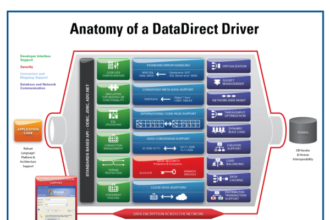This post originally appeared on our sister publication, HR Dive. Their mission is to provide busy professionals like you with a bird’s-eye-view of the HR industry in 60 seconds. To subscribe to their daily newsletter click here.

This post originally appeared on our sister publication, HR Dive. Their mission is to provide busy professionals like you with a bird’s-eye-view of the HR industry in 60 seconds. To subscribe to their daily newsletter click here.

Those who attended the SHRM annual conference heard over and over again the three holy words of modern HR: culture, strategy, and analytics.
But meaning can get lost after hours of (useful) sessions extolling the virtues of giving HR “a seat at the table.” How can HR make culture “intentioned?” How do you strategize successfully? What does authenticity mean, anyway?
HR Dive spoke to a few leaders in the space to reach a down-to-earth understanding of these terms, including Kronos’ David Almeda, SVP, Chief People Officer, and ADP TotalSource’s Maria Black, President. These experts explained how HR can become more strategic — and in a meaningful way.
Back to basics: Culture
Culture (via recruiting brand, employer brand, employee experience, etc.) has surged as the supposed key to attract and retain talent. People tend to use the word ‘culture’ fairly generally – and it’s near impossible to do anything about it when your supposed parameters aren’t defined, Almeda said.
“You have to understand there is a culture, intentioned or not,” he said. The building blocks of a workplace will manifest as culture (like it or not) — meaning that is where HR should start. Kronos, for example, builds its culture on stability and high levels of trust between employees and management, Almeda noted.
A company’s culture can’t stagnate. It should be built for “continuous change” and remain fluid depending on what the company needs at any given time.
“When we announce stuff, they should get it,” Almeda said of employees. They should be able to trust that any change being made is in their and the company’s favor.
A particularly difficult thing: culture also has to be authentic. Much like when trying to correct a kid’s behavior, simply saying “stop” when employees do something unwanted produces little actual effect. Almeda advised that companies should instead focus on their strengths, and work from there.
Making change matter through strategy
Kronos’s journey to a Massachusetts Top Place to Work list was based on one important question: How do you change the perception of a 40-year-old technology company … especially when the newcomers in the field seem so appealing?
In the past decade, new opportunities arose for employer brand thanks to Glassdoor, LinkedIn and the like. “Glassdoor didn’t even exist a couple of years ago, and now it matters,” Almeda said. That meant Kronos needed to innovate and reinvent for a new reality.
“You can’t be subtle about that,” he noted. If a company wants to change, it needs to make that intention clear both internally and externally — and then move forward after taking stock of its structures and programs.
For example, Kronos recently changed to an open vacation policy. Open vacation is a popular, fairly new policy made popular by “startup culture,” but switching to it had real, strategic value for Kronos as a company, Almeda noted. The decision wasn’t made lightly or because everyone else was already doing it — it was decided because the company already had structures in place to support such a program. An open policy requires trust, “which is what the company is based on,” Almeda said. It gave high-performers the leeway to do what they needed to do and take the time they needed while forcing those important trust conversations to happen between management and low-performers.
The impact? Kronos was able to invest the money used in the old accrual vacation model into paid parental leave programs, college loan repayment, and a scholarship program.
For HR to become “truly strategic,” HR must also choose its focus. Open vacation worked for Kronos because it had the evidence that it would compliment the way managers and workforce functioned.
The power of authenticity
There is a slight silver lining here: For many HR problems, doing the most obvious and human thing in response is often the right solution, Black said.
Data analysis on workers’ compensation found that when a call is made to an injured worker from a supervisor within the first 24 hours asking if the company can provide any further assistance, rates of return to work were “markedly different.”
“It’s so simple to do,” Black noted — and yet, very few companies were doing that.
There may have been concerns about liability in the past, for instance, with workers’ compensation calls. Similar shackles may have prevented other, similar “human” touches. But it’s a great example of how the human thing to do is often the most productive solution.
“It’s about authenticity,” Black said. “That’s what is allowing the shackles to come off.”
Employers can use this to their advantage, especially now that employees are changing how they view the work experience. Employees these days see themselves more as consumers of an employer brand, Black said, which means instilling more authenticity in the work is more important than ever — and therefore, more productive.
According to a recent ADP study entitled “The Evolution of Work: The Changing Nature of the Global Workplace,” 89% of employees “will choose to work on personal interests/things that impact society” in order to feel fulfilled at work beyond just compensation. Employers can channel that desire through something as simple as strong corporate responsibility programs, which will help improve retention and lower turnover.
“People want to connect in a non-connected world,” Black said.
Technology and analytics as enablers, not crutches
In order for companies to create meaningful change and authentic cultures, HR pros do need to have a working sense of how to gather and interpret data. Analytics can feel overwhelming because they can be done for just about everything. Instead, take a moment to understand what the company needs to use data for. What can be solved with the right numbers?
If you don’t have measurements in place for the issues that need attention, that’s where HR can start, Almeda said. The company should encourage the use of metrics, data, and tech to reach actual results.
“A theory of management has to be reflected in the tools,” Almeda added. “It’s a way to institutionalize what you are doing.”
In other words, using analytics shouldn’t just be a checkbox exercise for HR. Both Almeda and Black agreed that the keys to creating a strong culture based on analytics included having the right tools and the right training to understand the important insights that can come out of data efforts.
Some ground has been lost in the past seven years due to a reactionary response to the advent of Big Data, Black said. No follow through from HR means no real insight from collected data. But it’s not all bad. After 20 years of experience in the industry, Black noticed that HR has transformed in a comparatively short amount of time. “It’s truly night and day. It’s more strategic,” she added.
If both HR and business leaders are educated on how to better use analytics, improvement can continue.
“I remember the evolution of HR,” Black said. “We’re really trying to execute the business agenda today.”
This post originally appeared on our sister publication, HR Dive. Their mission is to provide busy professionals like you with a bird’s-eye-view of the HR industry in 60 seconds. To subscribe to their daily newsletter click here.







